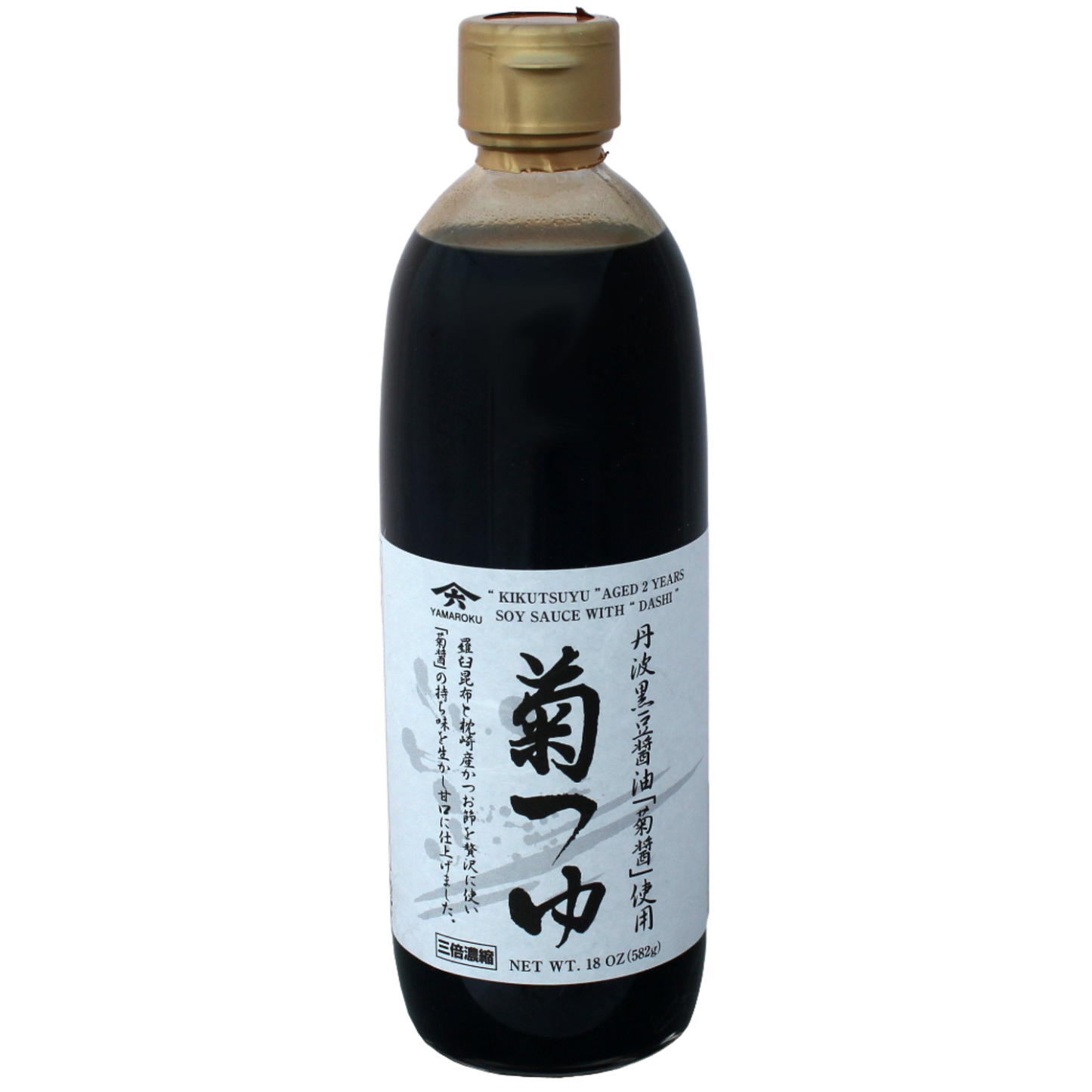1
/
of
1
Soy Sauce w/ Bonito and Kelp Stock (Kiku Tsuyu), 18oz (532ml)
Soy Sauce w/ Bonito and Kelp Stock (Kiku Tsuyu), 18oz (532ml)
Regular price
$30.00 USD
Regular price
Sale price
$30.00 USD
Unit price
/
per
Couldn't load pickup availability
Using Yamaroku's Aged 2 Years Kiku bishio Soy Sauce as the base, the Kiku Tsuyu Soy Sauce is made with the use of dried bonito flakes, dried kelp, Japanese mirin (sweet cooking rice wine) and has a bit of sweetness using sugar from the southern Japanese island of Tanegashima. Kiku (菊) is the flower Chrysanthemum and, like the Cherry Blossom, it is chosen as a representative flower symbol of Japan. Kiku can also be interpreted as being "Ultimate" or "Final", and Yamaroku wanted this aged soy sauce to be the ultimate symbol. Tsuyu (つゆ) means soup mixed with soy sauce. Suggested usage are with soumen (fine white noodles), udon (thick wheat noodles), soba (buckwheat noodles), food cooked in boiling water, oden (winter dish with various ingredients like boiled eggs, processed fish cakes, daikon radish, etc. stewed in light soy flavored broth) and as sauce for tempura (battered and deep fried seafood or vegetables). No preservatives or chemical seasonings are used.
Kioke (木桶) is a traditional Japanese wooden container used to ferment Japanese-style food. A microbe for fermentation settles in the kioke which turns it into the best brewing container.
The basic seasonings for a Japanese meal consist of the following: soy sauce, vinegar, mirin (sweet rice wine), and sake. All of these ingredients were brewed in a kioke back in Japan's Edo period during the years of 1603-1868. The fermentation of a microbe is required for making all the seasonings have the highest quality of taste. These were only possible through the use of the kioke which was hailed as the best container for brewing the seasonings.
The soy sauce industry today is more reliant on industrial production of the sauce, and now less than 1% of soy sauce production is brewed the traditional way using kioke. This method for creating authentic Japanese cuisine is slowly fading away due to the shift of mass manufacturing.
In Japan, only 1 company remains that produces the kioke barrels. With only about 60 kioke in their possession, most which will be impossible to use in 50 years, the current 5th generation owner of Yamaroku Shoyu took action and became a disciple from that company to learn how to build a kioke. This will help keep the traditional way of making soy sauces alive and will be passed on to the next generation.
Kioke (木桶) is a traditional Japanese wooden container used to ferment Japanese-style food. A microbe for fermentation settles in the kioke which turns it into the best brewing container.
The basic seasonings for a Japanese meal consist of the following: soy sauce, vinegar, mirin (sweet rice wine), and sake. All of these ingredients were brewed in a kioke back in Japan's Edo period during the years of 1603-1868. The fermentation of a microbe is required for making all the seasonings have the highest quality of taste. These were only possible through the use of the kioke which was hailed as the best container for brewing the seasonings.
The soy sauce industry today is more reliant on industrial production of the sauce, and now less than 1% of soy sauce production is brewed the traditional way using kioke. This method for creating authentic Japanese cuisine is slowly fading away due to the shift of mass manufacturing.
In Japan, only 1 company remains that produces the kioke barrels. With only about 60 kioke in their possession, most which will be impossible to use in 50 years, the current 5th generation owner of Yamaroku Shoyu took action and became a disciple from that company to learn how to build a kioke. This will help keep the traditional way of making soy sauces alive and will be passed on to the next generation.
Share


